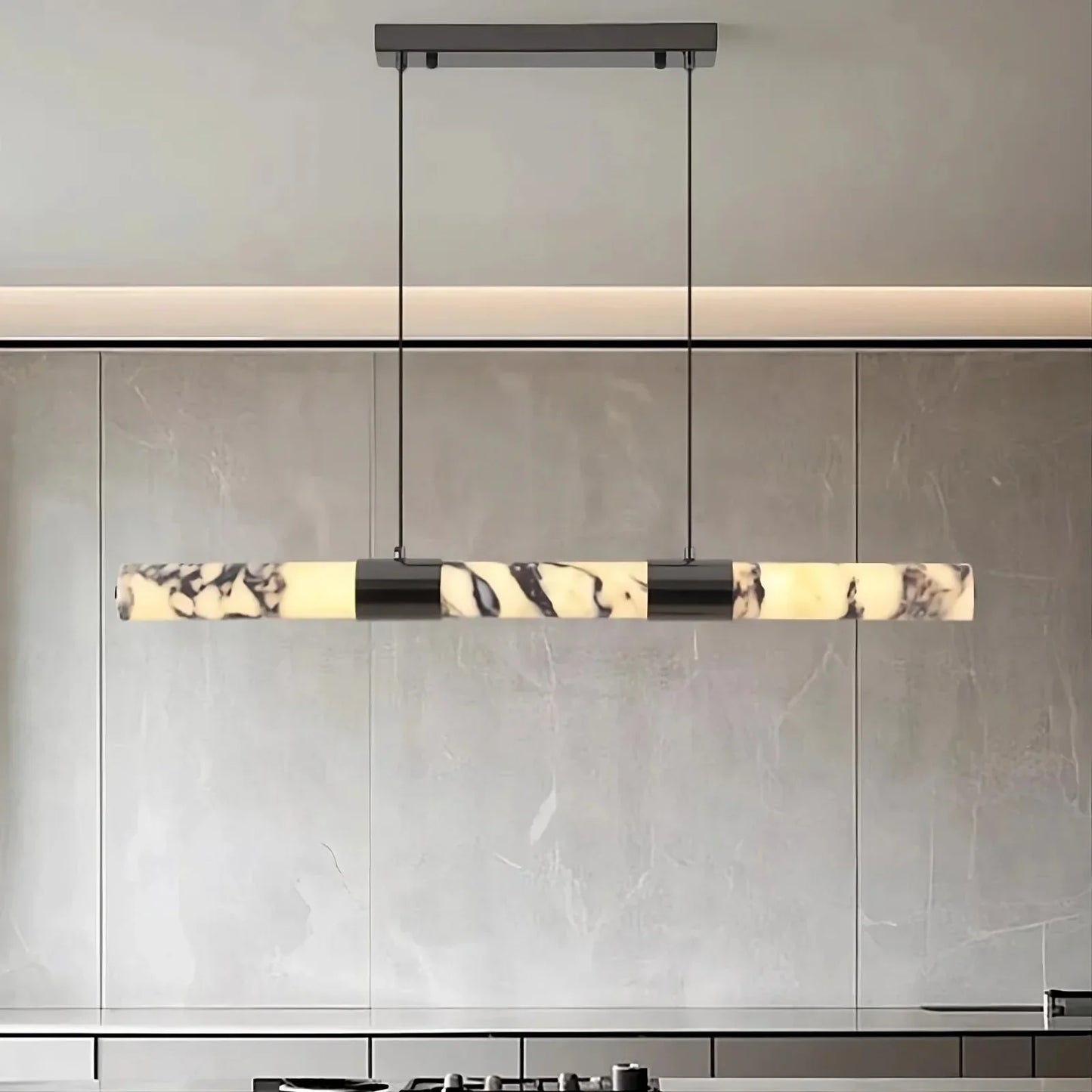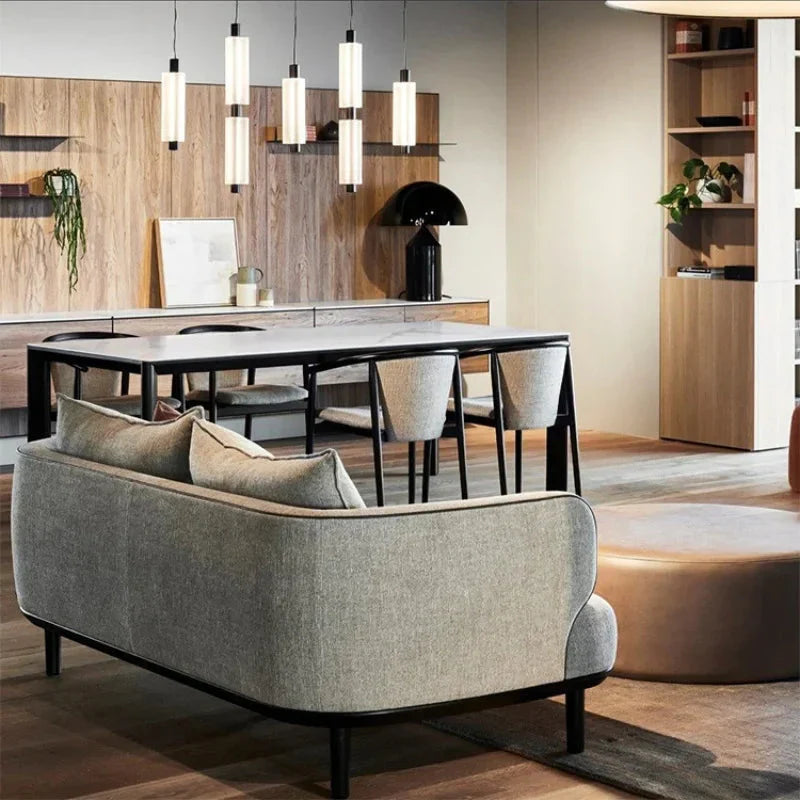
Introduction to Contemporary Pendant Lighting
Contemporary pendant lighting is a versatile and stylish choice that enhances the aesthetic of modern spaces. These fixtures can serve as focal points or subtle accents, depending on design and placement. They offer functional lighting while adding a touch of elegance to any room.
- Design Variety: Contemporary pendants are available in various shapes and materials, including glass, metal, and acrylic. This diversity allows for customization to suit different interior themes.
- Functionality: Besides providing ambient light, pendant lights can be used for task lighting, making them suitable for kitchens, dining areas, and workspaces.
- Installation Options: Pendants can be installed singly for minimalistic spaces or in multiples for a more dramatic effect.
This category of lighting is ideal for anyone looking to transform their living area with modern elegance.
The Evolution of Pendant Lighting Styles
Pendant lighting has experienced diverse transformations over the years. Initially, pendant lights served primarily functional purposes in industrial settings:
- Industrial Origins: Utilitarian designs used in factories and warehouses emphasized durability and efficiency.
- Mid-Century Modern: The 1950s brought sleek lines and minimalistic designs, integrating style with functionality.
- Eclectic Trends: The 1970s and 1980s embraced bold colors and unconventional shapes, reflecting evolving artistic movements.
- Contemporary Styles: Today, pendant lights are designed with cutting-edge materials, such as recycled metals and glass, embodying energy efficiency and sustainability.
"The journey of pendant lights from industrial workhorses to contemporary decorative pieces mirrors the broader shifts in design philosophy and technology."
Materials and Finishes: Choosing the Right Look
Selecting the appropriate materials and finishes for designer pendant lights is essential in creating the desired ambiance in any room. Each material offers unique aesthetic and functional attributes:
- Glass: Provides a sleek, modern appearance. Ideal for enhancing light diffusion.
- Metal: Available in various finishes such as chrome, brass, or bronze. Offers a contemporary or industrial feel.
- Wood: Confers warmth and texture, suitable for rustic or traditional spaces.
- Fabric: Adds softness and can create a diffused glow. Perfect for bedrooms and living areas.
Consider how each material interacts with existing décor and the desired lighting function for the space.
Energy Efficiency and Bulb Options
When selecting designer pendant lights, it’s crucial to consider energy efficiency and bulb types. These factors not only impact electricity consumption but also affect light quality and ambiance.
- LED Bulbs: LED bulbs stand out for their long lifespan and energy efficiency. They provide bright, consistent lighting while consuming minimal power.
- CFL Bulbs: Compact Fluorescent Lamps are another efficient choice, offering a soft glow suited for relaxed settings.
- Incandescent Bulbs: Though traditional, they consume more energy and are gradually being replaced by eco-friendly alternatives.
- Smart Bulbs: These innovative bulbs allow remote control and customization through smart devices, combining efficiency with convenience and style.
Each option offers distinct benefits aligned with unique lighting needs and sustainability goals.
Top Trends in Contemporary Pendant Designs
In the world of pendant lighting, design trends constantly evolve, offering fresh styles and innovative concepts. Modern aesthetics blend seamlessly with functionality to appeal to diverse tastes.
- Sculptural Forms: Artistic designs transform pendants into statement pieces. Bold shapes and creative use of geometry highlight individuality in decor.
- Mixed Materials: Combining materials like metals, glass, and wood offers eclectic appearances. The contrast of textures adds depth and intrigue to lighting solutions.
- Sustainable Design: Eco-friendly options gain popularity. Use of recycled materials and energy-efficient technologies aligns with environmental consciousness.
- Smart Lighting: Integration of smart technology offers customizable lighting experiences. Remote and app control enhance convenience and adaptability.
- Vintage Revival: Designs inspired by retro styles bring nostalgia into modern settings, merging past charm with present functionality.
These trends reflect current shifts in consumer preferences, focusing on personalization and environmental responsibility.
How to Choose Pendant Lighting for Different Rooms
Selecting pendant lighting varies by room type and function. In a living room, it's essential to focus on style and scale. Opt for larger and more elaborate designs to act as a focal point.
For kitchens, consider task lighting over islands or countertops. Choose adjustable options for flexibility. In dining rooms, pendants should complement the table shape—linear fixtures for rectangular tables, round for circular ones.
In bedrooms, prioritize ambiance. Soft lighting and dimmable features can enhance comfort. Hallways require adequate lighting for functionality, recommending spaced-out smaller pendants for even illumination.
Each room requires specific considerations for optimal lighting and aesthetics.
Installation Tips and Safety Considerations
When installing designer pendant lights, it is essential to adhere to safety guidelines to ensure a successful and secure setup.
-
Hire a Professional Electrician:
Engage an experienced electrician to handle the wiring, ensuring compliance with local building codes and safety standards. -
Check Ceiling Support:
Verify the ceiling can support the light's weight. Reinforce weak structures before installation to prevent accidents. -
Turn Off Power:
Always turn off the power at the circuit breaker before starting any electrical work to avoid electric shock. -
Proper Hanging Height:
Maintain an appropriate hanging height based on the room’s function, typically 28-34 inches above surfaces like tables or counters. -
Use Suitable Equipment:
Select the correct tools, such as voltage testers and insulated pliers, to ensure safe handling and precise installation.
Enhancing Ambience with Adjustable Pendant Lights
Adjustable pendant lights offer a versatile solution to customize the atmosphere of any room. These lights empower individuals to tailor the brightness and focus according to the space’s needs, enhancing both functionality and aesthetic appeal.
- Versatility: Adjustable pendant lights can adapt to various tasks, from creating a cozy dining experience to providing focused light for reading.
- Design Options: Available in numerous styles, these lights allow for seamless integration with existing decor, ensuring a cohesive look.
- Energy Efficiency: Many adjustable pendant lights are compatible with LED bulbs, offering long-term savings on energy without compromising brightness.
"Adjustable lighting is crucial in crafting a personalized ambiance" - Lighting Experts
These lights not only illuminate but also elevate a room’s design, making them an essential choice for any space transformation.
DIY Projects: Customizing Your Pendant Lights
Customizing pendant lights allows homeowners to infuse personal style and creativity. Transforming standard fixtures into bespoke creations can be achieved through simple modifications.
- Paint and Finish: Altering the color or applying a unique finish can effortlessly refresh old or plain pendant lights. Opt for metallic spray paints for a modern twist or matte finishes for understated elegance.
- Change Shades: Replace generic shades with eclectic alternatives. Consider glass mosaics, woven textures, or colored glass to diversify the look.
- Add Embellishments: Enhance with beads, crystals, or fabric trims.
These embellishments add sophistication and character.
- Adjust Height: Modify suspension length for tailored illumination specific to room requirements.
Implement these DIY techniques for a unique lighting experience.
Caring for and Maintaining Your Pendant Lighting
Proper maintenance of pendant lighting ensures longevity and optimal performance. Follow these guidelines for effective care:
- Regular Dusting: Clean pendants with a soft, lint-free cloth to remove dust. Avoid harsh chemicals.
- Check Connections: Periodically inspect wiring and connections for safety and efficiency.
- Replace Bulbs: Use specified bulb types, and replace as needed to maintain light quality.
- Adjust Height: Adjust cords or chains to desired levels while ensuring secure attachment.
- Inspect Fixtures: Look for wear or damage and consult professionals if repairs are needed.
Reflecting attention to details in care results in elegant and enduring pendant lighting features throughout any space.
Frequently Asked Questions About Pendant Lighting
1. What is the ideal height for hanging pendant lights?
- Pendant lights should hang 28 to 36 inches above a kitchen island or dining table. For ceilings over 8 feet, adjustments can be made for proportionality.
2. How many pendant lights should be used over a kitchen island?
- Typically, two to three pendants are recommended for even lighting. Consider the island's size and space between pendants, maintaining around 30 inches gap between each fixture.
3. Are pendant lights suitable for all rooms?
- Yes, pendant lights are versatile and can enhance kitchens, dining areas, bedrooms, bathrooms, and entryways, providing both functional and decorative illumination.
4. What bulb type is best for pendant lighting?
- LED bulbs are preferred for energy efficiency and longevity, offering various color temperatures to suit ambiance needs.
Expert Insights: Interior Designers on Pendant Lighting
Interior designers offer vital insights on choosing pendant lighting:
- Scalability: Experts emphasize selecting fixtures based on room size to avoid overwhelming or underwhelming spaces.
- Layering: Designers suggest layering, combining pendants with recessed and task lighting for a balanced ambiance.
- Purpose: Consider functionality; pendants can serve as task lighting over kitchen islands or mood lighting in living rooms.
- Style Cohesion: Ensure pendant styles harmonize with existing decor, maintaining a cohesive aesthetic.
- Height: Specialists recommend hanging pendants 28-34 inches above surfaces for optimal lighting efficiency and visual appeal.
"The right pendant can transform a room's entire vibe," adds renowned designer.
Seasonal Decor: Updating Your Pendant Lighting for the Holidays
Preparing your space for the holidays means more than just changing decorations. Updating pendant lighting for a festive touch enhances ambiance. Consider the following tips for seasonal pendant lighting decor:
- Warm Hues: Choose bulbs with warm tones to give a cozy, inviting atmosphere.
- Decorative Shades: Swap plain shades for ones with holiday motifs.
- Additional Accents: Add garlands, ornaments, or ribbons to the pendants.
- Layered Lighting: Combine pendant lights with other light sources for a layered effect.
- Dimmers: Installing dimmers allows for mood adjustments as needed.
Updating lighting adds magical transformation, ensuring a holiday-ready space.
Conclusion: Finding Your Perfect Pendant Light
To locate the ideal pendant light, consider the various features and design elements best suited to each room.
- Functionality: Assess the primary purpose of the lighting, whether for task, mood, or general illumination.
- Style: Match the pendant's design with the room's décor to ensure cohesion.
- Size and Scale: Choose a proportionate pendant light to maintain balance within the space.
- Material and Finish: Select materials that complement surrounding textures and finishes.
- Height and Placement: Factor in the room's height and desired focal points for optimal placement.
These considerations will guide homeowners in selecting pendant lights that enhance room aesthetics and functionality.




